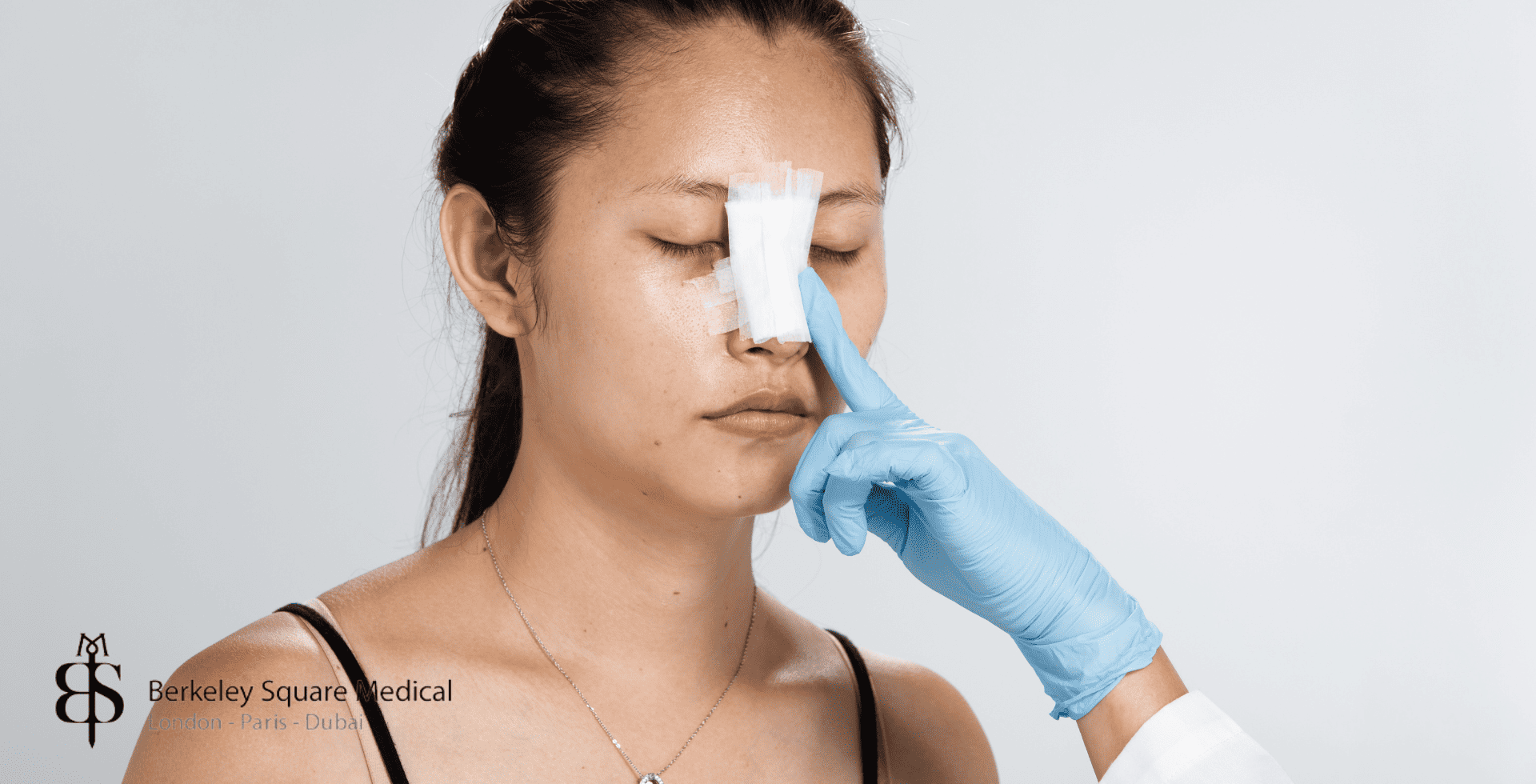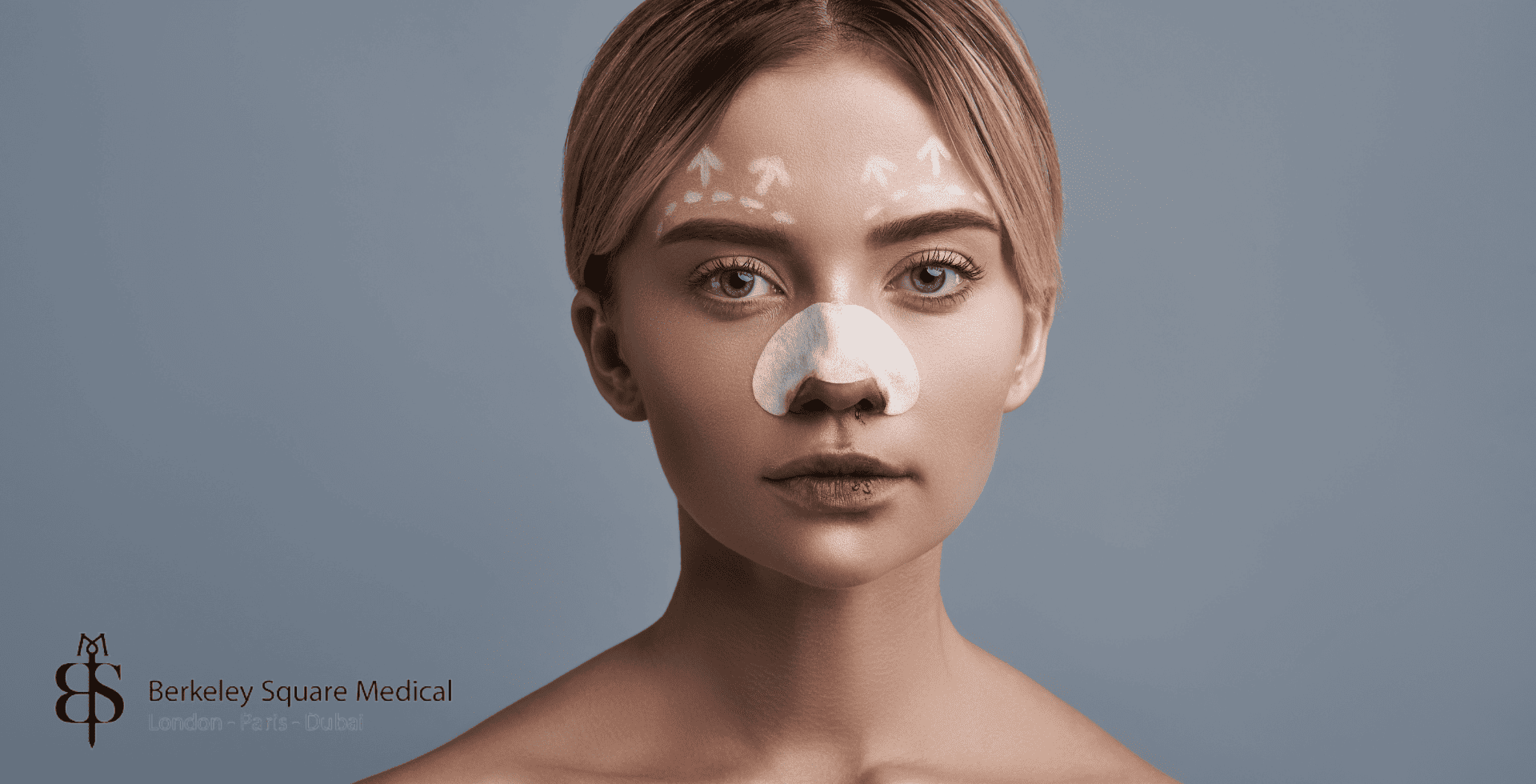The prevention of infection is a critical step in any surgery, and rhinoplasty is no exception. Infection can cause significant inflammation and scarring, which can lead to deformity of the nose. (1) Ensuring that all preventive measures are in place is essential for the success of the procedure and the health of the patient.
If an infection does occur, it must be recognised and treated promptly and effectively to prevent further damage. Untreated infections can result in complications such as prolonged healing, additional surgeries, and in severe cases, permanent deformity.
How to recognise infection after surgery?
It is normal to experience some redness, swelling, and bruising after rhinoplasty surgery. These are typical responses of the body to surgical intervention and usually subside within a few days to weeks.
However, certain symptoms can indicate an infection rather than normal healing. Key signs to watch for include:
- Increasing redness, swelling, or bruising
- Fever or chills
- Persistent or worsening pain
- Unusual or foul-smelling drainage from the incisions
- Changes in breathing or nasal obstruction
Early detection and treatment of infection are crucial. If you experience any of these symptoms, contact your surgeon immediately. With prompt treatment, most infections can be successfully managed without causing any permanent damage.

What causes infection after rhinoplasty?
Intraoperative Factors
Infection after rhinoplasty can occur due to several intraoperative factors:
- Bacteria on Surgical Equipment: Ensuring all surgical tools and equipment are sterile is vital to prevent bacteria from entering the surgical site.
- Contact with Body Fluids: During surgery, contact with body fluids such as blood can introduce bacteria.
- Allergic Reactions to Surgical Materials: Some patients might have allergic reactions to materials used during the surgery, such as adhesives or implants, which can increase the risk of infection.
Postoperative Factors Other causes of infection are related to the postoperative period:
- Poor Hygiene and Wound Care: Neglecting proper wound care can lead to infections. Patients must follow their surgeon’s instructions diligently.
- Long-Term Nasal Packing: Extended use of nasal packing can harbour bacteria and lead to infection.
- Exposure to Smoke and Recreational Drugs: Smoking and using recreational drugs can impair healing and increase infection risk.
- Bacterial Entry Through Skin Breaks: Any breaks in the skin, if not properly managed, can become entry points for bacteria.
Preventing infection involves both careful surgical techniques and diligent postoperative care.
Watch Video
Minimising the risks of infection
Preoperative Precautions
- Choosing a Reputable Clinic and Surgeon: The first step to minimising infection risk is to select a highly experienced and reputable surgeon and clinic. Ensure the facility adheres to strict sterilisation and infection control protocols.
- Pre-Surgery Health and Hygiene Tips: Patients should follow preoperative guidelines such as maintaining good personal hygiene, avoiding smoking, and managing any existing health conditions. This preparation can help reduce the risk of complications during and after surgery.
Postoperative Care Instructions
- Keeping the Surgical Site Clean and Dry: It is vital to maintain cleanliness around the surgical area. Avoid getting the incision site wet unless instructed by your surgeon. Use clean, dry dressings as needed.
- Proper Wound Care Techniques: Follow your surgeon’s instructions for wound care, which may include using prescribed antiseptic solutions or ointments.
- Medication Adherence: Take all prescribed medications, including antibiotics, exactly as directed to prevent infection and promote healing.
- Activity Restrictions to Prevent Infection: Avoid strenuous activities, heavy lifting, and any actions that could put pressure on your nose. Protect your nose from any potential impact or contamination during the healing process.
Detailed Postoperative Care Guide
Cleaning the Surgical Area
- Using Saline or Sterile Water: Use saline solution or sterile water on cotton balls or gauze pads to gently clean around the edges of your nostrils. This helps to remove crusting and maintain hygiene without irritating the incision.
- Cleaning with a Nasal Aspirator: Carefully use a nasal aspirator bulb syringe device to wash the inside of your nose, ensuring you follow the technique advised by your surgeon.
- Rinsing and Drying Techniques: Rinse your nose thoroughly with saline water solution, avoiding contact with other parts of your face. Pat dry gently with a clean towel or gauze pad.
Additional Recovery Tips
- Avoiding Pressure on the Nose: Be mindful of your sleeping position and avoid any activities that may put pressure on your nose.
- Dietary Recommendations: Stay away from hot or spicy foods and very hot or cold drinks, as these can increase swelling and discomfort.
- Rest and Hydration: Ensure you get plenty of rest and stay well-hydrated to support your body’s healing process. Good nutrition and hydration can enhance your immune system’s ability to fight infection.
Minimising Infection Risks with Berkeley Square Medical
Sterile Surgical Environment
At Berkeley Square Medical, we prioritise creating a sterile environment for all surgical procedures. Our surgical team takes extensive precautions to maintain sterility, significantly reducing the risk of infection.
Experienced Surgical Team
Our team comprises highly skilled and experienced consultants specialising in rhinoplasty. Their expertise and meticulous approach ensure the highest standards of care and safety for every patient.
Commitment to Patient Safety
We are committed to ensuring that your rhinoplasty is performed in the safest possible environment. From preoperative preparations to postoperative care, our protocols are designed to minimise infection risks and promote optimal healing.
Sanjay is a Senior Clinical Member at Berkeley Square Medical carrying over a decade of experience. He has assisted over 1500 surgeries carried out at the hospital supporting patients both pre and post-surgery throughout their treatment journeys. This article was written with the contribution of
Dr Taimur Shoaib, our Consultant Plastic Surgeon.
Latest posts by Sanjay Rai
(see all)
